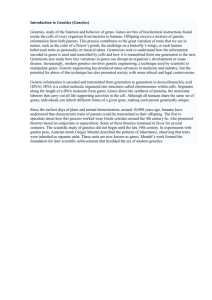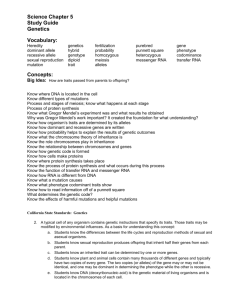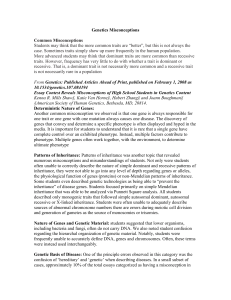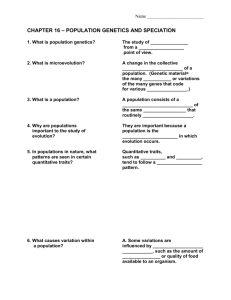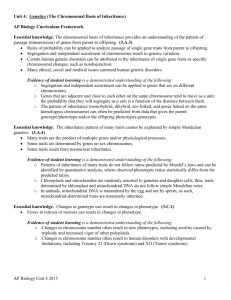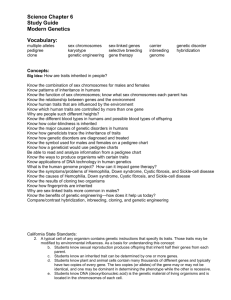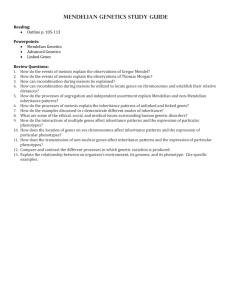Midterm Menu January 2014
advertisement
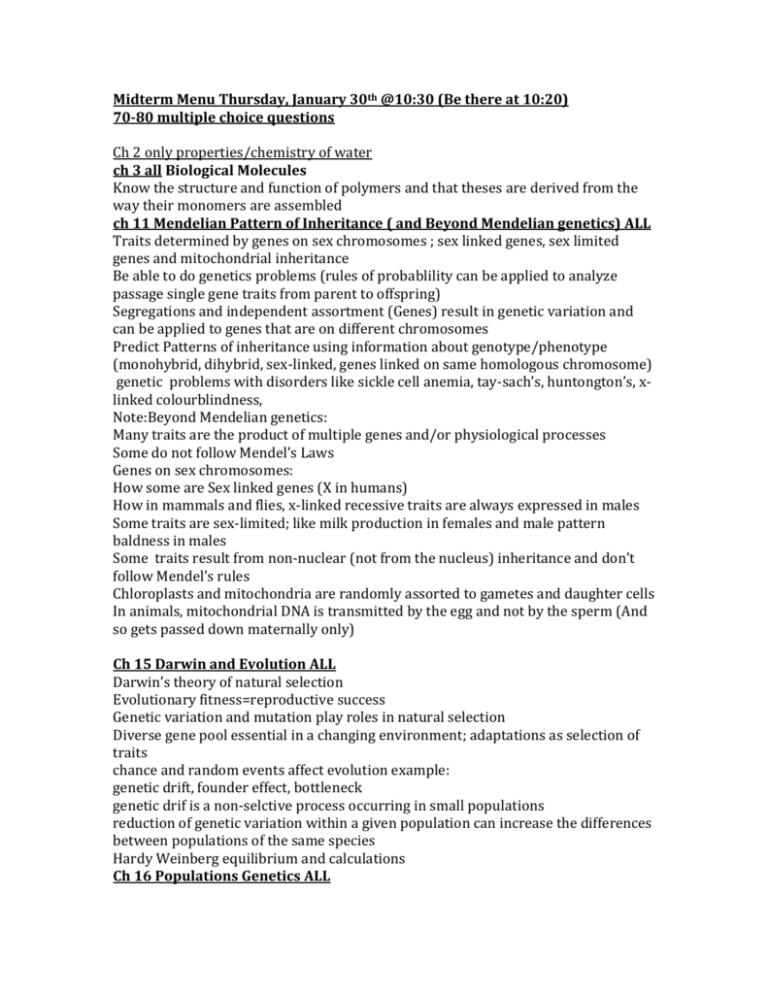
Midterm Menu Thursday, January 30th @10:30 (Be there at 10:20) 70-80 multiple choice questions Ch 2 only properties/chemistry of water ch 3 all Biological Molecules Know the structure and function of polymers and that theses are derived from the way their monomers are assembled ch 11 Mendelian Pattern of Inheritance ( and Beyond Mendelian genetics) ALL Traits determined by genes on sex chromosomes ; sex linked genes, sex limited genes and mitochondrial inheritance Be able to do genetics problems (rules of probablility can be applied to analyze passage single gene traits from parent to offspring) Segregations and independent assortment (Genes) result in genetic variation and can be applied to genes that are on different chromosomes Predict Patterns of inheritance using information about genotype/phenotype (monohybrid, dihybrid, sex-linked, genes linked on same homologous chromosome) genetic problems with disorders like sickle cell anemia, tay-sach’s, huntongton’s, xlinked colourblindness, Note:Beyond Mendelian genetics: Many traits are the product of multiple genes and/or physiological processes Some do not follow Mendel’s Laws Genes on sex chromosomes: How some are Sex linked genes (X in humans) How in mammals and flies, x-linked recessive traits are always expressed in males Some traits are sex-limited; like milk production in females and male pattern baldness in males Some traits result from non-nuclear (not from the nucleus) inheritance and don’t follow Mendel’s rules Chloroplasts and mitochondria are randomly assorted to gametes and daughter cells In animals, mitochondrial DNA is transmitted by the egg and not by the sperm (And so gets passed down maternally only) Ch 15 Darwin and Evolution ALL Darwin’s theory of natural selection Evolutionary fitness=reproductive success Genetic variation and mutation play roles in natural selection Diverse gene pool essential in a changing environment; adaptations as selection of traits chance and random events affect evolution example: genetic drift, founder effect, bottleneck genetic drif is a non-selctive process occurring in small populations reduction of genetic variation within a given population can increase the differences between populations of the same species Hardy Weinberg equilibrium and calculations Ch 16 Populations Genetics ALL show how environments change and act as a selective mechanism (Peppered moth example) Random changes in DNA and new gene combinations produce phenotypic variation Some phenotypic variations increase or decreas fitness of the organism and the population (Sickle cell anemia) Humans impact variation in other species (eg artificial selection, loss of genetic diversity in a crop species, overuse of antibiotics) Ch 17 Speciation (adaptive radiation and sympatric radiation); allopatric and sympatric speciation with reproductive isolation (both pre and postzygotic) theories on rate of evolution Ch 19.1-19.3 three domain system (archaea and bacteria lack internal membranes and organelles and have a cell wall while eukaryotes have cytoskeletons, membrane bound organelles, endomembrane systems, including the nuclear envelope and internal membranes which facilitate cellular processes by increasing surface area where reactions can occur) and cladistics

